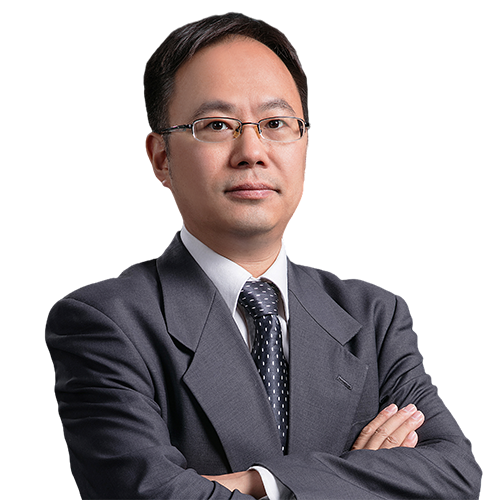Recently, Yang Hangsheng, senior partner at King&Capital Law Firm, together with lawyers Zhang Deshan and Peng Qi, successfully represented a client in a sales contract dispute case. After the trial, the opposing party (plaintiff) withdrew the lawsuit.
The client was suddenly sued by the plaintiff, who sought repayment of several million yuan in equipment payments and late payment penalties from ten years prior. The plaintiff claimed that the client had “failed to fully pay the majority of the equipment payments.” The lawsuit was filed in the plaintiff's local court, a district court in Taiyuan City, Shanxi Province. The sudden pursuit of old debts had complex causes and backgrounds, and there were many possible combinations of defenses that could be used in the client's statement. The King&Capital legal team made an accurate assessment, carefully examined several defenses, and ultimately decided to use a single statute of limitations defense strategy. After a thorough and efficient trial, the plaintiff ultimately withdrew the lawsuit.
Case Background: A Decade-Old Debt
In March 2015, the client, a buyer from Shandong Province, entered into a purchase contract with a seller from Shanxi Province to procure two large-scale pieces of equipment (innovative devices in a specific niche field), with a total price of nearly 5 million yuan. The equipment was delivered and installed in October of the same year, and the client paid a portion of the purchase price. Regarding the subsequent fulfillment process and why the remaining large portion of the payment was not made, the Shandong company and the Shanxi company each had their own version of events.
According to the plaintiff, they had attempted to claim the payment through various means over the years. After sending a lawyer's letter in September 2024 and receiving no response, they ultimately filed a lawsuit in February 2025.
According to the defendant, the decision not to pay the remaining amount was a mutual agreement between the parties, and the process was complex, with several specific reasons.
Strategic Decision:
Can the statute of limitations defense achieve a decisive victory?
Based on their recollection and understanding of the facts, the clients naturally have their own specific grounds for defense. However, certain reasons that may seem reasonable in common sense do not constitute legal grounds, especially when the grounds for defense are mutually exclusive. Therefore, it is necessary to conduct in-depth research and make careful decisions.
The King&Capital legal team thoroughly researched the plaintiff's evidence, listened to the defendant's description of the facts, and, with the client's consent, ultimately chose to use the statute of limitations defense as the sole reason. The risks of this decision were, first, whether the plaintiff could present valid evidence of the interruption of the statute of limitations, and second, whether the judge would be determined to dismiss the plaintiff's large claim solely on the basis of the statute of limitations.
A two-pronged approach:
Rejecting the plaintiff's verbal evidence and strengthening the court's conviction
In cases where only the statute of limitations defense is raised, rigorous cross-examination is crucial to protecting the defendant's interests. This case underwent two rounds of cross-examination in court, with the key points of the cross-examination process as follows:
1. First round of cross-examination
Core issue: The plaintiff only submitted the sales contract and deliberately concealed the subsequent supplementary agreement.
Cross-examination highlights: The plaintiff's claims were inflated and failed to reflect the true nature of the case, constituting litigation misconduct.
Statute of limitations defense: The evidence submitted, such as the lawyer's letter, failed to effectively prove that demands were made within the statute of limitations period.
2. Second trial cross-examination
Supplementary evidence: Testimony from witness Du (claiming annual phone and on-site demands for payment).
Key points of cross-examination: Precisely control the questioning process and ask key questions: (1) “Can you make decisions for the plaintiff company?” This concise question and the affirmative response from the other party successfully confirmed that Du Mou is the actual controller of the company. Du Mou's status as the actual controller makes him a party with a vested interest in the case (or should be a party), and his testimony cannot be used as the sole basis for determining the facts of the case; (2) “Are there any records of phone calls with the client each year?” Du denied this, indicating that the plaintiff's claim of annual phone collection cannot be supported by any phone call records; (3) “Were there any other people present during the on-site collection?” Du's negative response confirmed that his testimony is “isolated evidence.”
Statute of limitations defense logic: The plaintiff's evidence is insufficient to prove that there were circumstances that interrupted the statute of limitations, nor can it prove that the defendant, after the statute of limitations had expired, received an expression of intent from the client to fulfill the obligation, as stipulated in Article 19 of the Supreme People's Court's Provisions on Several Issues Concerning the Application of the Statute of Limitations System in Civil Cases.
In addition, considering that the plaintiff was suing locally and had home field advantage, and that judicial practice generally does not adopt strict standards on the issue of the statute of limitations, the King&Capital legal team further strengthened its reasoning to avoid the psychological burden on the adjudicator of dismissing a huge claim solely on the basis of the statute of limitations. The reasoning focused on two main points: on the one hand, the plaintiff significantly reduced the claim after the defendant presented evidence, indicating that the plaintiff did not litigate in good faith and intentionally avoided some objective facts; on the other hand, the sales relationship occurred many years ago, and there have been no intense conflicts in recent years. The loss or temporary unavailability of evidence is understandable. From these two perspectives, both the plaintiff and defendant may be unable to fully reconstruct all the facts, and the adjudicator need not be concerned about so-called objective facts; legal facts supported by evidence are sufficient as the basis for adjudication!




